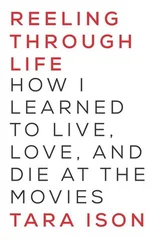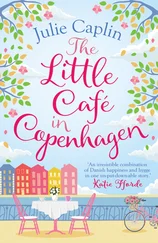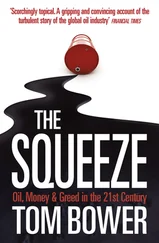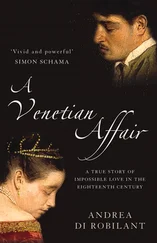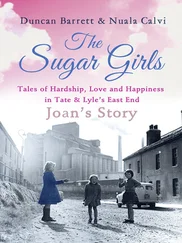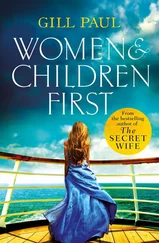JOHN BREWER
SENTIMENTAL MURDER
Love and Madness in the Eighteenth Century
Cover
Title Page JOHN BREWER SENTIMENTAL MURDER Love and Madness in the Eighteenth Century
Prologue
Preface
1. Spring 1779
2. The Press: A Case of Sentimental Murder
3. The Killer as Victim: James Hackman
4. Missing Stories: Lord Sandwich and the Making of a Libertine
5. Missing Stories: Martha Ray and the Life of the Mistress
6. Love and Madness, A Story too True
7. Wordsworth and the Doctors
8. The Nineteenth Century
9. The Twentieth Century
10. History and Telling Stories
Index
Notes
Copyright
About the Publisher
Sentimental Murder began life as part of a review I wrote of G. J. Barker-Benfield’s The Culture of Sensibility and has gone through several transformations before it found its present form. It started out as a more conventional historical account of James Hackman’s murder of Martha Ray, the mistress of the 4th earl of Sandwich but, in large part because of questions raised in seminars and after lectures, I began to rethink how to tell the story. I’m especially grateful to Julie Peters for the remarks she made at a talk at Columbia University that brought out starkly (at least to me) the problems about how to handle this particular narrative. Thanks also to others at Harvard, Columbia, CalTech and Yale, for their help in shaping the book. I owe a special debt to my former colleagues at the University of Chicago, notably Jim Chandler, Katie Trumpener, Paul Hunter and Sandra Macpherson, all of whom probably heard the story more times than they cared to. Thanks to Donna Andrew, Claire L’Enfant, Max Novak, Roger Lonsdale, Peter Mandler, Helen Small, Kathleen Wilson, Angela Rosenthal, Martin Levy, Luisa Passerini, John Sutherland, John Wyner and Simon Schama for help, comments and support. Holger Hoock and Clare Griffith both provided invaluable research assistance, setting a high standard for me to follow.
The present Earl of Sandwich and Lady Sandwich generously afforded me access to the 4th Earl’s private papers, gave me lunch and even allowed me briefly to exhibit my more than rusty cricketing skills. I have also to acknowledge the help of the librarian at Dove Cottage, and the kind permission of the Wordsworth Trust to quote from the papers about Basil Montagu in their collections at Dove Cottage, Grasmere. The staff at the Bodleian and Huntingdon libraries, so far apart yet so close in the high quality of their service, have made the research for this book a pleasure. I was fortunate in having a Moore fellowship at the California Institute of Technology, which gave me time to complete the book. Gill Coleridge, my agent, Arabella Pike at HarperCollins and Elisabeth Sifton at Farrar, Straus and Giroux have helped make this a better book by their constant critical support and vigorous editing. Special thanks to Stella, Grace and Lori for their constant support, love and forbearance.
This book is dedicated to the memory of Roy Porter, friend and colleague, who died in 2002. My first conversation with Roy took place in 1967 in the gate-house of Christ’s College Cambridge. (We talked about seventeenth-century religion, sleep and his efforts to be a soccer goalkeeper.) Over the next thirty years or more our paths crossed in Cambridge, California and London. When I began this book I naturally turned to him – no one writing about love and madness in the eighteenth century would not have wanted to consult Roy Porter. No man knew more about love and libertinage in both the eighteenth and twentieth centuries. Characteristically, he plied me with references and information, quite a lot of it from his own work. Little did I know, when I began the project, that one of its incarnations would be the first Roy Porter lecture, established to commemorate him. Roy’s absence has made me realize just how important he was to so many of us, not just as an endless source of gossip – no conversation was complete without a Porter anecdote – but as someone whose dedication and single-mindedness, expansive commitment to open-minded intellectual inquiry and to the best eighteenth-century values was (a sometimes intimidating) example and inspiration. He is sorely missed.
Sentimental Murder investigates an eighteenth-century killing and attempted suicide. By tracing their changing interpretation over more than two hundred years, I want to explore the relations between history and fiction, storytelling and fact, past and present. I have adopted – and want to connect – two very different perspectives. On the one hand I examine in minute detail the events of a few crucial moments – it cannot have been more than a few seconds – between 11.30 p.m. and midnight on 7 April 1779, when, on the steps of the Covent Garden Theatre in London, a young clergyman, James Hackman, shot Martha Ray, the mistress of the Earl of Sandwich, and then tried to kill himself. On the other I consider a broad panorama that ranges over more than two centuries and is populated by journalists, doctors, novelists, poets, memoir writers, biographers, and historians who have tried to make sense (and sometimes art) out of the killing. My focus then is not just on what happened in 1779 but on the stories told about this event – who told them, how they were told, and what their tellers were up to in telling them.
Perhaps I have chosen this bifocal approach because, although I first came across the story of Hackman, Ray, and Sandwich when I was investigating the cultural life of eighteenth-century London, I learned about it from nineteenth-century sources: brief entries in the section on Covent Garden in histories of London, wedged between tales of great actors and lives of notorious whores; snippets in neatly arranged scrapbooks of newspaper cuttings about the theatre and music, crime and low life in the previous century collected by Victorian ladies and gentlemen; and anecdotes in popular histories based on eighteenth-century memoirs which first appeared in print in the mid-nineteenth century.
At first I ignored Martha Ray’s story because I saw it through Victorian eyes as a simple moral tale. Covent Garden, with its theatres, wholesale grocery and sex trade, and the brutal crime of passion committed in its main square offered a snapshot of an earlier age, clinching evidence that the Georgians were sexier but less civilized, more glamorous but much less moral than their Victorian heirs. The incident seemed high on sensation but low on historical content – just a graphic anecdote about the seamier side of Georgian night life. But the peculiar insistence of the Victorian version of the story, the repeated stress on the moral distance between the crime of 1779 and the probity of the 1840s – the Victorian commentators worried over the story like a dog over a bone – made me curious to find out more. Eventually I was led back to the newspaper reports, trial and bits of surviving evidence at the time of the crime.
These revealed a different story – not a tale governed by moral distance and high-minded censoriousness but an account of a crime whose perpetrator and victim were obvious, but whose meaning was obscure. Of course Hackman killed Ray – a crowd of onlookers had seen him pull the trigger – but why? And who or what had led him to his crime? These were not just my questions; they were asked by many of Hackman’s contemporaries.
Then, as now, crimes of passion, especially those committed by men against women, were not rare. But this particular killing attracted enormous attention and comment. No doubt this was because of the status and nature of the protagonists. A similar crime of passion committed by a drunken labourer who killed an impoverished girlfriend – the London courts handled many such cases – would have merited only a line or two, if that, in the London newspapers. But Hackman was a minister in the Church of England (albeit only recently ordained), and Martha Ray shared the bed of one of the most powerful and unpopular politicians of the day. Such a crime on the edges of high society was inevitably a good newspaper story, and a source of gossip and potential scandal, not least because the circumstances surrounding the murder were so obscure.
Читать дальше

